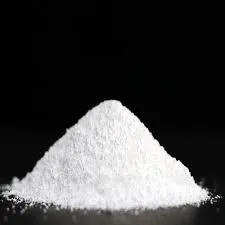Understanding Sodium Thiocyanate Properties, Uses, and Safety
Sodium thiocyanate (NaSCN) is an inorganic compound that has garnered attention across various industries due to its versatile properties and applications. This white crystalline solid is highly soluble in water and has a mild saline taste. As we delve into the characteristics, uses, and safety precautions associated with sodium thiocyanate, it becomes clear why this compound is significant in both industrial and laboratory settings.
Properties of Sodium Thiocyanate
Sodium thiocyanate can be produced through the reaction of sodium hydroxide, carbon disulfide, and ammonia. It typically exists as a colorless to white solid and is known for its hygroscopic nature, meaning it can absorb moisture from the air. This property is significant for its storage and handling. The compound has a molecular weight of 81.07 g/mol and exhibits a melting point of approximately 287°C. When dissolved in water, sodium thiocyanate dissociates into sodium ions (Na+) and thiocyanate ions (SCN-), a process that is highly endothermic, leading to a decrease in temperature.
Applications in Various Industries
Sodium thiocyanate is utilized in several fields, including agriculture, chemical synthesis, and environmental science. In agriculture, it is often applied as a component in niche herbicides and fungicides, offering a means of pest control. Its effectiveness against certain pests makes it a valuable asset for farmers seeking eco-friendly alternatives to traditional pesticides.
In the chemical industry, sodium thiocyanate serves as a reagent in various chemical syntheses. It plays a crucial role in the production of isothiocyanates, compounds that possess various biological activities and applications in pharmaceuticals. Additionally, thiocyanates are used in the preparation of complex cyanide compounds, which are essential in mining and mineral processing.
thiocyanate sodium

Another important application of sodium thiocyanate is in analytical chemistry. It is used in titration methods to determine the presence of certain metal ions, including silver and mercury. The compound can react with heavy metals to form stable complexes, aiding in the detection and quantification of these metals in environmental samples.
Safety and Handling
Despite its useful applications, it is essential to handle sodium thiocyanate with caution. The compound can be harmful if ingested or inhaled, and it may irritate the skin and eyes upon contact. Prolonged exposure can lead to more severe health risks, including toxicity to specific organs. Therefore, it is crucial to use personal protective equipment (PPE), such as gloves, goggles, and masks, when working with this chemical.
In terms of environmental impact, sodium thiocyanate can contribute to soil and water pollution if released in significant quantities. It can release toxic compounds when decomposed or when it reacts with strong acids. Consequently, proper disposal methods must be followed to mitigate any harmful effects on the environment.
Conclusion
Sodium thiocyanate is a compound of remarkable utility with diverse applications across multiple industries, including agriculture, chemical synthesis, and analytical chemistry. While its properties make it a valuable asset for various processes, it is essential to handle it with care to avoid health risks and environmental damage. As research and development continue, the potential uses for sodium thiocyanate may expand further, making ongoing education about its properties and safety more important than ever. Awareness of both its capabilities and risks enables us to harness its benefits while safeguarding human health and the environment.

